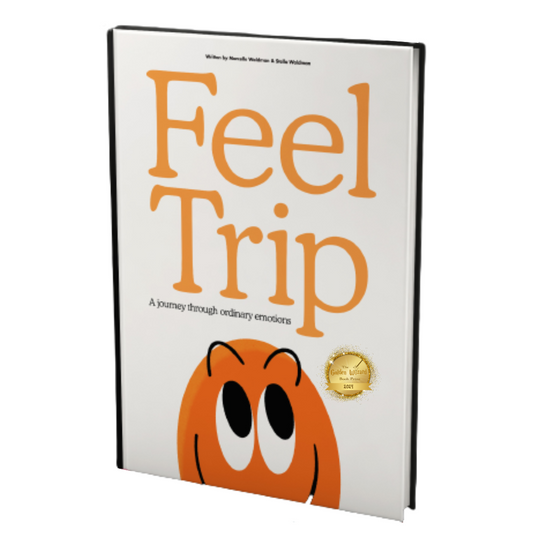The Power Behind Naming Our Emotions: How to teach it to our children
Share

There is so much power behind naming our emotions. For our children, we want to teach them emotional vocabulary so that they are able to label their feelings. As children learn to identify their feelings they will often start with the most basic or often referred to as the core emotions, or the emotions that are innate and shared by everyone. There are a few models of what those basic emotions are. One widely popular model is by clinical psychologist Paul Ekman (1970), he names 6 basic emotions as sadness, happiness, fear, anger, surprise and disgust. In 1990, he expanded this list adding pride, shame, embarrassment and excitement. Robert Pilchuk created the "emotion wheel" which shows how emotions are built upon and create more complex emotions. With all of the research out there on emotions the studies are far from complete, but one thing is very clear - naming our feelings helps us develop skills to manage our emotions.
Our children experience complex feelings just like us. They become angry, excited, scared, frustrated, embarrassed. Our kids are not born with the ability to label how they are feeling. Often, we see their emotional expression shown through facial expression, body language, and behavior. We need to give our children the tools to express themselves appropriately - they need the vocabulary along with an understanding of how emotions feel in their bodies.
From the time babies are born, they begin expressing their emotions. The way we respond to these emotions is the start of helping them in identifying, expressing, and regulating their feelings. Think...you drop a pan on the floor of the kitchen, baby begins to cry (assuming this loud noise scared them), you walk over, gently pick up your baby, and in a soothing voice say, "That must have scared you, that was a really loud noise", then continue to rock your baby to help them get back to calm. You have just experienced an important, teachable interaction of emotional expression, labeling, and co-regulating with your baby; the start of some very important life skills.
Children who are able to learn how to label, express and manage emotions in a healthy manner often show incredibly positive outcomes later in life. Children who learn healthy ways to express and manage emotions are more likely to: be empathetic and caring for others, perform better at school and work, have positive, stable relationships, have good mental health and wellbeing, less behavioral problems, greater resiliency and coping skills, have a positive sense of self, and feel more confident.
Children who are able to understand, label, express and regulate a wide range of feelings will experience long term benefits to their mental health and wellbeing. FeelLinks resource was created with intent to support your child's growth in these areas - promoting healthy, lifelong skills.
FeelLinks dolls are a wonderful tool to aid in labeling and communicating feelings. They are also helpful in talking about where emotions are felt in our bodies using the head, heart and belly touchpoints. Dolls can also be used for emotion management with squeezing, tossing, breathing together or using for play. Theres a lot that can be communicated through play! FeelLinks journal is a tool for learning broader emotional vocabulary with "words to grow on", expressing feelings through drawing/writing, and problem solving skills.
So, what can you do to support your child in building these important skills?
Tune in and listen. Listen to your child. Let them express how they are feeling without jumping in to tell them how they should be feeling or how to fix it.
Comfort. Provide comfort, if that is what your child is in need of.
Do not distract or dismiss feelings. Children are best at judging how something made them feel. Even if you do not agree with what they are expressing, do not dismiss their feelings. Also, try not to use distraction whenever they express a difficult feeling; it’s important that children learn from a young age to cope with those feelings. Brushing them off will make things more difficult to cope with later in life.
Be a role model. Express your own emotions, label your feelings, and talk about them out loud. Tell your children when you are feeling pleasant and unpleasant emotions. Do not stuff your feelings away and hide them from your children. We all have feelings and it’s important that our children understand that. You also want to model ways you manage your emotions. Your children are always watching and listening to you- model what you want to see and hear from them when emotions are high.
All children should live in an environment where they feel emotionally safe and supported, where their feelings are heard, accepted, understood and met with empathy. This will build a healthy home environment and strong family bonds built upon trust, safety and empathy.
With gratitude,
Marcelle





